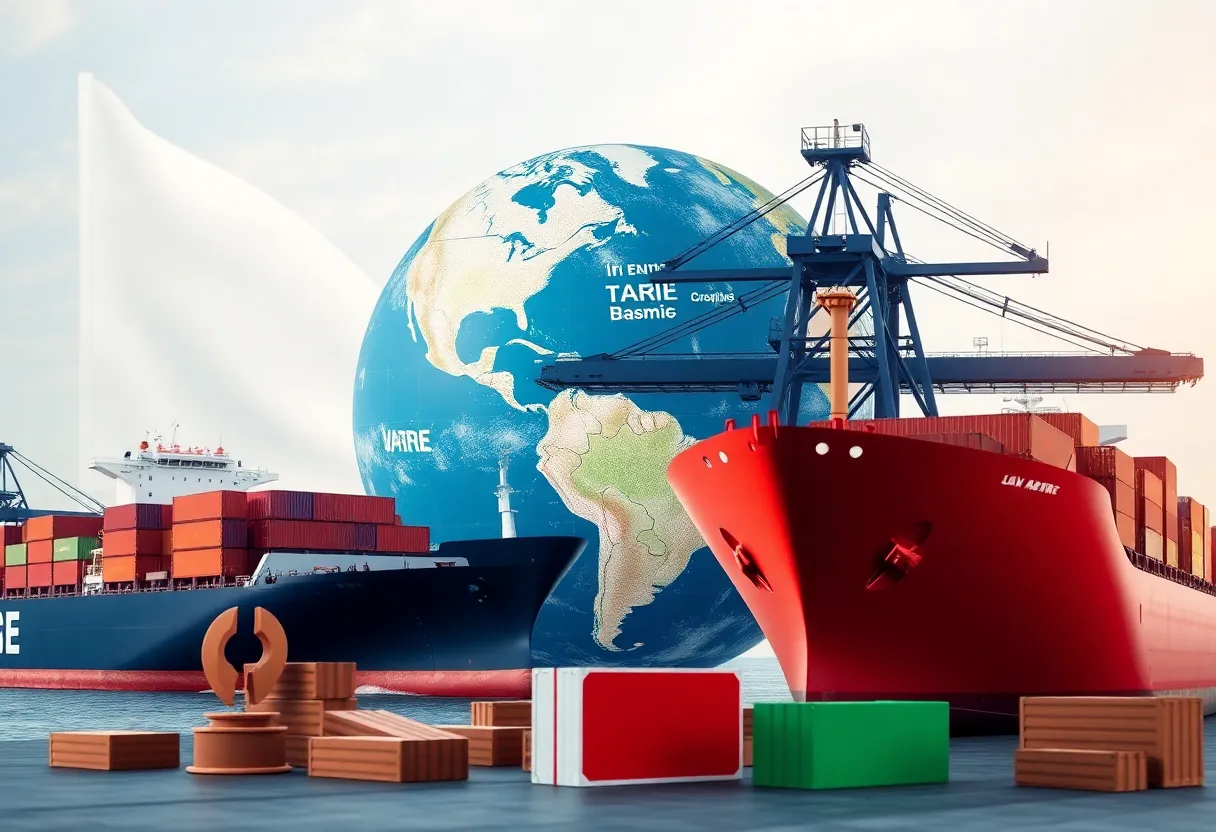News Summary
President Trump has proposed a significant 50% tariff on all goods imported from the European Union starting June 1, amid stalled trade negotiations. This proposal has raised concerns among economists over potential negative impacts on inflation and economic growth in both the U.S. and Europe. The announcement has already affected financial markets, with major stock indexes showing declines. Meanwhile, EU officials express their commitment to negotiation, amidst threats of retaliatory measures. The situation reflects increasing tensions in international trade and its implications for the global economy.
Trump Proposes Hefty Tariff on EU Imports: What’s Going On?
In a surprising twist that could shake up international trade, President Trump has suggested a whopping 50% tariff on all goods imported from the European Union starting June 1, 2025. This bold announcement comes on the heels of stalled trade negotiations with the EU, leaving many people wondering what led to this tough stance.
The Background
Just a month ago, a 20% “reciprocal” tariff was put on hold after it was announced in April. However, as talks failed to show any sign of progress, Trump’s frustration boiled over. He expressed strong dissatisfaction over what he deems unfair EU trade practices, insisting that discussions are “going nowhere.” According to Trump, the EU has been taking advantage of the United States in trade, a claim backed by a staggering trade deficit of over $250 billion reported last year.
The Economic Implications
Economists are sounding the alarm bells regarding the proposed tariffs. Experts warn that implementing such high tariffs could lead to a damaging mix of higher inflation and slower economic growth in the U.S. Depending on how things unfold, there’s potential for Europe to face recession and a ripple effect that could hurt global economic growth.
Market Reaction
Just as one might expect, financial markets didn’t take this news well. Major European stock indexes took a hit, with the STOXX 600 index dropping 1.7%. Across the Atlantic, the U.S. Dow Jones opened down 480 points, reflecting the unease surrounding trade policies.
What’s Next?
U.S. Treasury Secretary Scott Bessent has provided insight into the negotiations, mentioning that EU proposals have not been competitive compared to those from other trading partners, and progress has been slow. In an interesting twist, Trump mentioned that he might be open to delaying the tariffs for companies that commit to building plants in the U.S. This would potentially make it more appealing for businesses to invest stateside rather than overseas.
Global Reactions
Responses from the EU have been just as charged. EU Trade Commissioner Maroš Šefčovič emphasized the EU’s commitment to negotiating in good faith, asserting that the tariff threats are unproductive and could hinder future talks. Meanwhile, the EU has indicated that they are preparing retaliatory measures against U.S. goods, totaling an estimated $108 billion if negotiations fail completely.
Voices of Concern
Irish Prime Minister Micheál Martin expressed serious disappointment regarding Trump’s threats, warning that it could harm the vital trading relationship that the U.S. and EU have cultivated over many years. On the other side of the channel, French Trade Minister Laurent Saint-Martin pointed out that threats of this nature don’t foster positive negotiations and reiterated the EU’s desire to de-escalate the situation.
What’s in the Pipeline
It’s worth noting that Trump’s earlier remarks hinted at a potential 25% tariff on Apple products if the tech giant continued its overseas production practices. Meanwhile, discussions between U.S. trade officials and representatives from various nations are ongoing, focusing on securing better trade deals—especially with countries like India.
The Bottom Line
As the clock ticks toward the proposed tariff implementation date, the stakes are high. With strong reactions from both sides of the Atlantic and potential repercussions for economies worldwide, the unfolding situation will definitely be worth watching. It’s clear that trade issues remain a contentious topic and could shape the economic landscape for years to come.
Deeper Dive: News & Info About This Topic

Author: STAFF HERE FLORENCE WRITER
The FLORENCE STAFF WRITER represents the experienced team at HEREFlorence.com, your go-to source for actionable local news and information in Florence, Florence County, and beyond. Specializing in "news you can use," we cover essential topics like product reviews for personal and business needs, local business directories, politics, real estate trends, neighborhood insights, and state news affecting the area—with deep expertise drawn from years of dedicated reporting and strong community input, including local press releases and business updates. We deliver top reporting on high-value events such as the Florence Festival of Lights, Pee Dee Pride, and agricultural expos at the Florence Center. Our coverage extends to key organizations like the Florence Regional Chamber of Commerce and the Pee Dee Area Council of Governments, plus leading businesses in healthcare and retail that power the local economy such as McLeod Health and Pee Dee Electric Cooperative. As part of the broader HERE network, including HERECharleston.com, HEREColumbia.com, HEREGreenville.com, and HEREHiltonHead.com, we provide comprehensive, credible insights into South Carolina's dynamic landscape.





